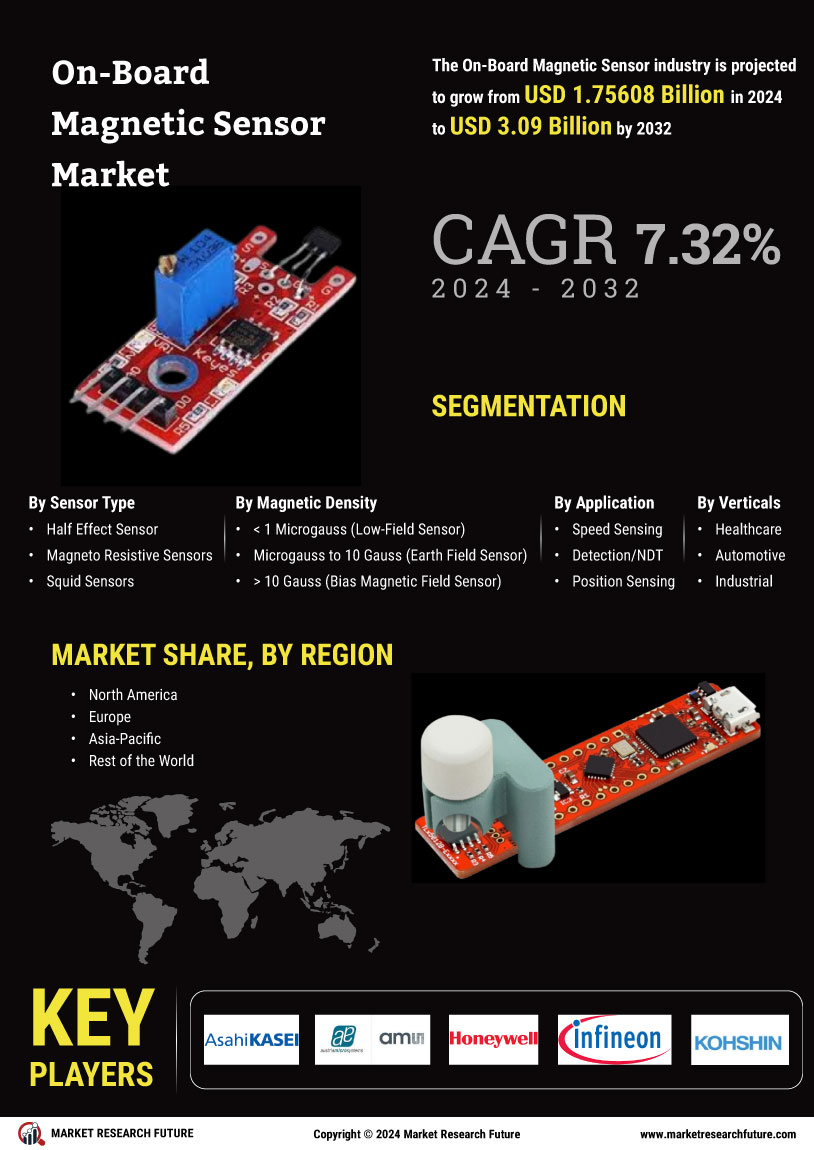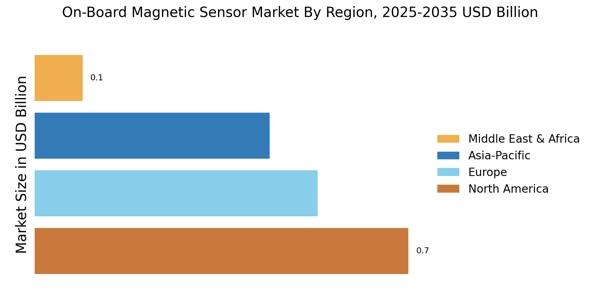Growing Demand in Automotive Sector
The automotive sector is a primary driver for the On-Board Magnetic Sensor Market, as vehicles increasingly incorporate advanced technologies. The integration of magnetic sensors in electric and hybrid vehicles for applications such as position sensing, speed detection, and current measurement is becoming more prevalent. As the automotive industry shifts towards automation and electric mobility, the demand for reliable and efficient sensors is expected to rise. Recent statistics suggest that the automotive segment accounts for nearly 40% of the total market share in the On-Board Magnetic Sensor Market. This growing demand is likely to propel further innovations and investments in sensor technology, ensuring that manufacturers remain competitive in a rapidly evolving landscape.
Rising Demand for Automation and Robotics
The On-Board Magnetic Sensor Market is witnessing a notable increase in demand driven by the automation and robotics sectors. As industries adopt automation technologies to enhance efficiency and productivity, the need for precise sensing solutions becomes paramount. Magnetic sensors play a critical role in robotic applications, providing essential feedback for navigation, positioning, and motion control. The market for industrial automation is projected to grow substantially, with magnetic sensors being integral to the development of smart factories and automated systems. This trend indicates a promising future for the On-Board Magnetic Sensor Market, as companies seek to leverage advanced sensing technologies to optimize their operations.
Focus on Sustainability and Energy Efficiency
Sustainability is becoming a crucial consideration in the On-Board Magnetic Sensor Market, as industries strive to reduce their environmental impact. The push for energy-efficient solutions is driving the development of sensors that consume less power while maintaining high performance. This trend is particularly evident in the automotive sector, where manufacturers are increasingly adopting magnetic sensors to optimize energy consumption in electric vehicles. The market is witnessing a shift towards eco-friendly materials and production processes, aligning with global sustainability goals. As a result, the On-Board Magnetic Sensor Market is likely to see a rise in demand for sensors that not only meet performance standards but also contribute to a greener future.
Increasing Applications in Consumer Electronics
The On-Board Magnetic Sensor Market is expanding due to the rising applications in consumer electronics. Devices such as smartphones, tablets, and wearables are increasingly utilizing magnetic sensors for features like compass functionality, orientation detection, and gesture recognition. The proliferation of smart devices is expected to drive the demand for compact and efficient magnetic sensors. Recent market analyses indicate that the consumer electronics segment is projected to grow significantly, potentially accounting for over 30% of the overall market share in the On-Board Magnetic Sensor Market. This trend suggests that manufacturers will need to innovate continuously to meet the evolving needs of consumers and maintain a competitive edge.
Technological Advancements in Sensor Technology
The On-Board Magnetic Sensor Market is experiencing a surge in technological advancements, particularly in sensor miniaturization and integration. Innovations in microelectromechanical systems (MEMS) have led to the development of highly sensitive and compact magnetic sensors. These advancements enable the sensors to be embedded in various applications, including automotive, aerospace, and consumer electronics. The increasing demand for precise navigation and positioning systems further drives the adoption of these sensors. According to recent data, the market for MEMS-based sensors is projected to grow at a compound annual growth rate of over 10% in the coming years. This trend indicates a robust future for the On-Board Magnetic Sensor Market, as manufacturers seek to enhance performance while reducing size and cost.
















Leave a Comment